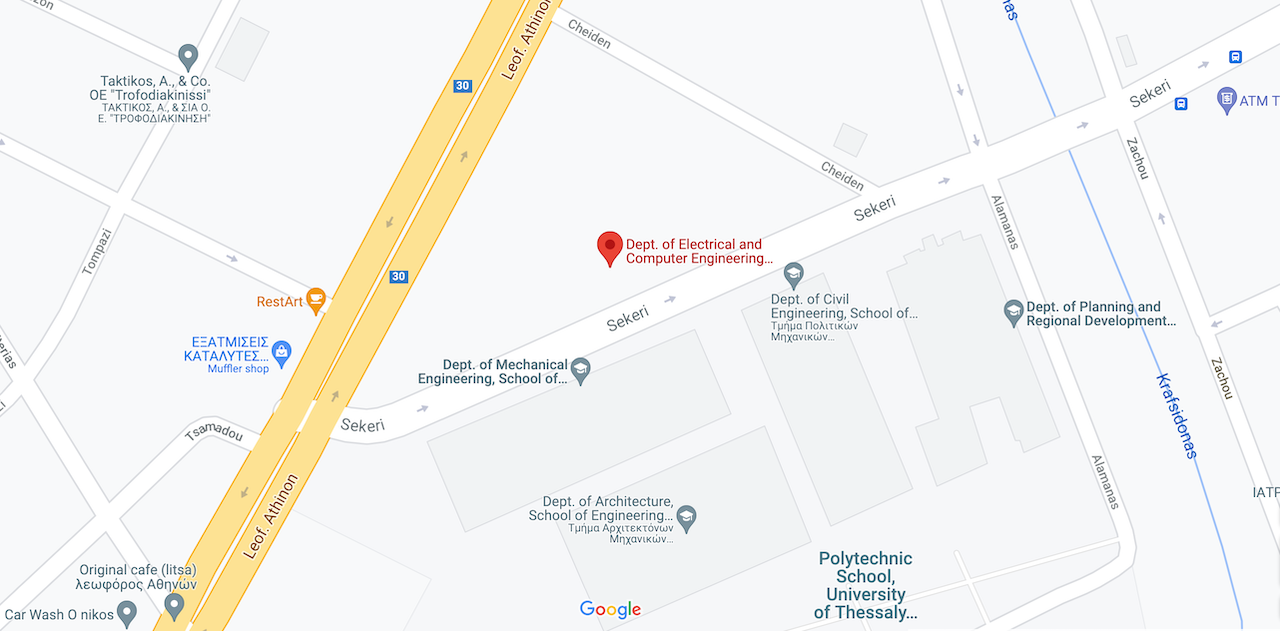| Subject Area | Signals, Communications, and Networking |
|---|---|
| Semester | Semester 8 – Spring |
| Type | Elective |
| Teaching Hours | 4 |
| ECTS | 6 |
| Course Site | http://eclass.uth.gr |
| Course Director |
|
| Course Instructor |
|
- Random Variables, Introduction to Random Variables, Mean, Variance, Moments, Functions of RVs, Important Random Variables, Two Random Variables, Correlation/Covariance, Inequalities and Limit Theorems
- Vectors of Random Variables, Vectors of Random Variables, Correlation and Covariance Matrices, Vectors of Gaussian RVs, General Transformation of Multiple RVs
- Introduction to Statistics/Estimation, Statistics, Estimation of Correlation and Covariance Matrices, Estimation of Signal Power and Normalization, Statistical Data Model, Estimation of Signal Power and SNR
- Linear Minimum Mean-Square Error (LMMSE) Estimation, LMMSE for the General Linear Data Model, Online LMMSE Estimation, Summary of LMMSE Estimation, Non-Linear Estimation of Random Vectors (MMSE & ML), Estimator Properties
- Random/Stochastic processes, Special Random Processes, Discrete: i.i.d. Process, Discrete: Bernoulli, Discrete: Sum Process + Random Walk, Continuous: Poisson.
- Inference and learning, Kalman filtering
The course focuses on the understanding of advanced mathematical tools from probability and statistics and their application in telecommunication systems and signal processing. In the first part of the course the student is introduces to the mathematical tools for many random variables, vectors ad the understanding of the concept of the data model. Next especial emphasis is given to the understanding of estimation and detection techniques. The third objective of the curse is to introduce the students to the necessary techniques for modeling physical phenomena with random processes. The learning outcomes of the course are achieved after executing a large number of homeworks and (6-7) and MATLAB pojects.
After successfully completing the course the student will be in a position to:
- To calculate the distributions of random vectors
- To calculate the covariance matrices of random vectors
- To use linear and non-linear estimation techniques for an arbitrary data model
- To recognize the data model of the random system and select the best way of estimating a random parameter
- To select the best random process category and class for modeling a physical phenomenon







